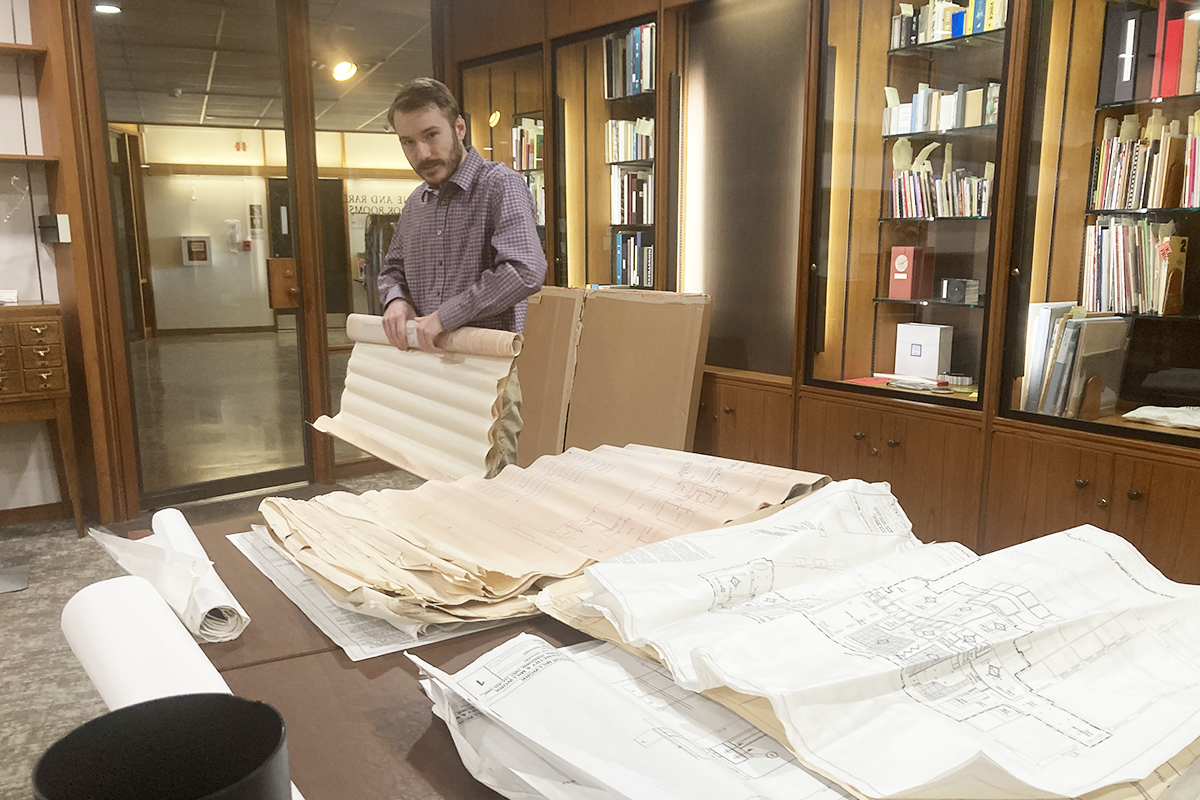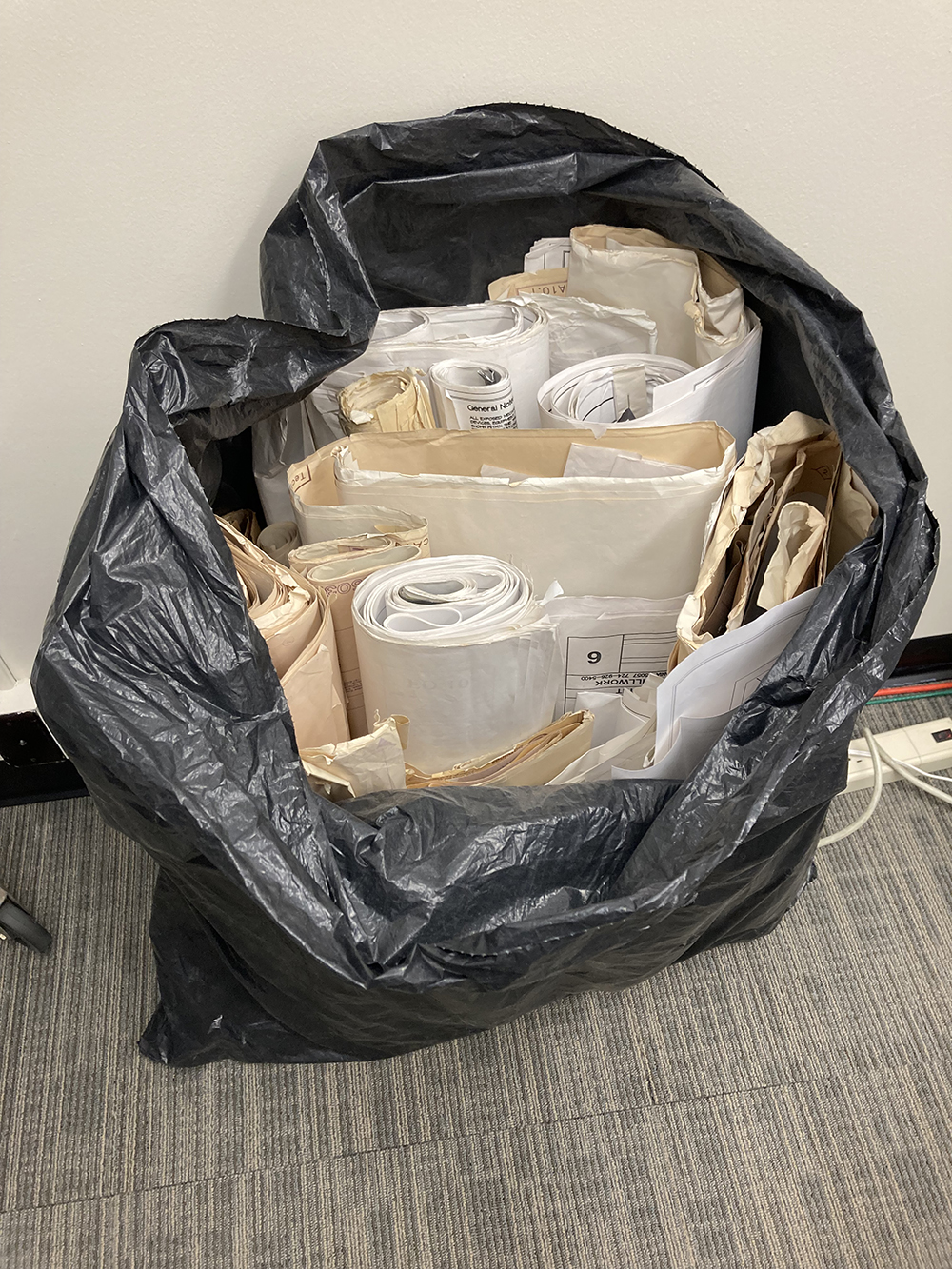
Before winter break, Dietrich College of Humanities and Social Sciences first-year Ryan Tosh found a large trash bag filled with architectural drawings depicting buildings on CMU’s campus in the KGB’s office during a cleaning session.
 The KGB — a student social organization that proclaims itself for “folks with a good sense of humor and a bit of whimsy,” and is also known for reviving CMU’s student-run satire magazine “readme” in 2024 — has a space on the third floor of the Cohon University Center, as well as a larger storage area, known as the “Kage,” for working on Booth during Spring Carnival.
The KGB — a student social organization that proclaims itself for “folks with a good sense of humor and a bit of whimsy,” and is also known for reviving CMU’s student-run satire magazine “readme” in 2024 — has a space on the third floor of the Cohon University Center, as well as a larger storage area, known as the “Kage,” for working on Booth during Spring Carnival.
“Both spaces are rather small, so they tend to get cluttered — many things are stacked, on shelves, or buried under other things,” Tosh explained. There wasn’t space for all the volunteers to work in the office together, so he sat organizing in the hallway. “Someone else found the bag of drawings and figured I'd be interested, so they got my attention.”
Tosh brought the bag to his dorm room and sorted through some of the drawings. As he considered what to do with the documents, he thought the University Archives might be interested in them.
Goal
- Make more space in the KGB’s office by handing over a bag of blueprints to a more appropriate home.
How We Helped
- When Tosh reached out to the Archives team to ask whether they were interested in the blueprints, they put him in contact with Arts and Humanities Librarian Lynn Kawaratani, who also oversees the Architecture Archives. The Architecture Archives collects, conserves, and promotes the use of architectural records that document the architects and architecture of Carnegie Mellon University, the city of Pittsburgh, and its region.
- Kawaratani was happy to evaluate the drawings, and arranged a time to meet with Tosh so he could turn them over.
Results
- Kawaratani connected with Facilities Management Archives and GIS Manager Nolan Grimes, who manages an online database of the drawings and documentation of all existing CMU buildings.
- Together Grimes and Kawaratani evaluated the documents, and discovered that nearly 80% of the drawings were not already a part of existing CMU records.
- The documents were digitized and added to the database so they can be referenced by Facilities Management. The blueprints are now stored at their facility.
- Thanks to Tosh’s find, the historical CMU blueprints can now be preserved for future generations. “I'm really glad that the drawings are now in the hands of someone who can maintain them properly,” Tosh said. “They had deteriorated a lot over the close to 40 years that they must've been in KGB's possession, and I don't think we would have had the resources to digitize or properly store them. Some of the drawings were really intriguing — I was most interested in the ones showing the maps of conduits from when fiber optics were installed — so I'm glad that they'll be usable by others and not just decaying in an office in the UC.”
